Explore More
The Houston Monarch Story Project was inspired by the desire to highlight the precarious future of the Monarch Butterfly as it navigates habitat loss and declining availability of native milkweed, the sole source of its larval diet. Michelle Matthews, who graduated in 2023 from the University of Houston with an MFA in sculpture, believed she could meld artistic vision with a public education opportunity.
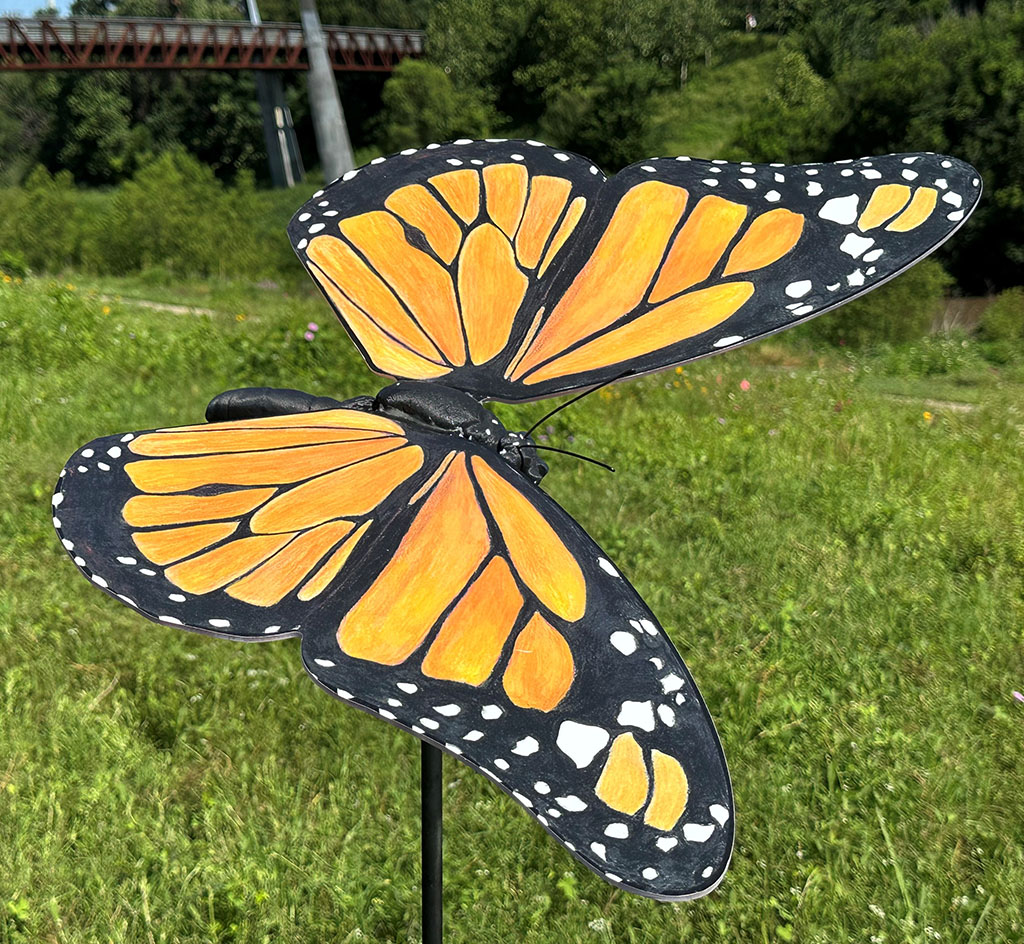
She would create scaled-up, true-to-life Monarch Butterfly sculptures fluttering over a field of coastal prairie plants to dramatize the need for healthy coastal prairie ecosystems to support survival of the species. Each butterfly sculpture would be 200 times larger than life, but accurate to the shape and wing pattern of a living Monarch Butterly. The sculptures would depict varying stages of flight for both males and females.
The project’s educational aspect would be as prominent as its artistic value. The oversized sculptures would be suspended in mid-flight over a field of coastal prairie plants native to the Houston region — especially native milkweed plants so crucial to larval development and nectar plants which sustain adult Monarch Butterflies.
Traditional signage strategically placed around the field would provide the public with information about the Monarch Butterfly’s life cycle and migration routes, including the routes that pass through the Houston region during their spring and fall migrations. This, coupled with an interactive feature, would ensure a comprehensive learning experience for visitors.
A system of QR codes related to questions and answers would engage people as they moved around the field. A marker placed at the base of each butterfly sculpture or along a pathway would bear a question to prompt the reader’s curiosity to learn more. The answers to the questions could be found by linking to a dedicated webpage on the UH Coastal Center’s website via the unique QR codes on each marker.
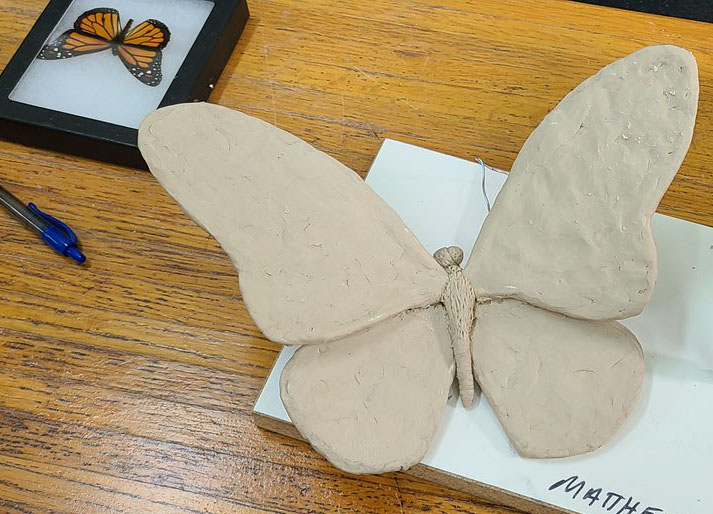
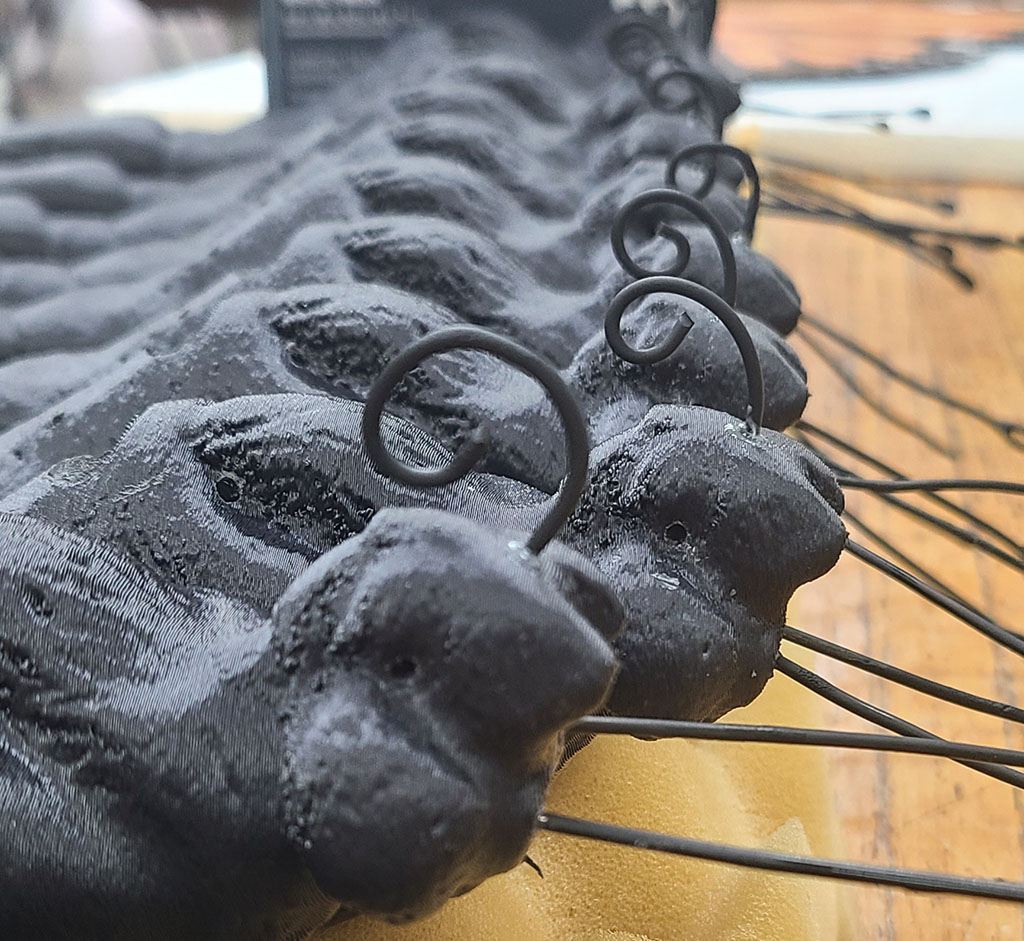
Matthews’ vision of merging art, habitat conservation, and public education found a receptive audience. After meticulous planning and securing project funding, an approved site, and the support of volunteers and the UH Coastal Center (UHCC), Matthews was able to focus on the design of the sculptures. This step-by-step approach ensured the project’s feasibility and set the stage for its successful execution.
Consulting with Lucy Carranza and Niell Gorman, her first issue was finding durable materials to withstand Houston weather for six months. Gorman and ION Prototyping Labs 3D printed the bodies using ASA filament. The wings were cut from polycarbonate with a CNC router. Decisions regarding wing shape and body were carefully considered to render a lifelike version. Butterflies have four wings, with the top and bottom wings overlapping, creating an illusion of a combined wing. A solid one-piece wing was developed. The edge of the butterfly wing appears ruffled but is a solid edge of black and white; Matthews had to duplicate the effect.
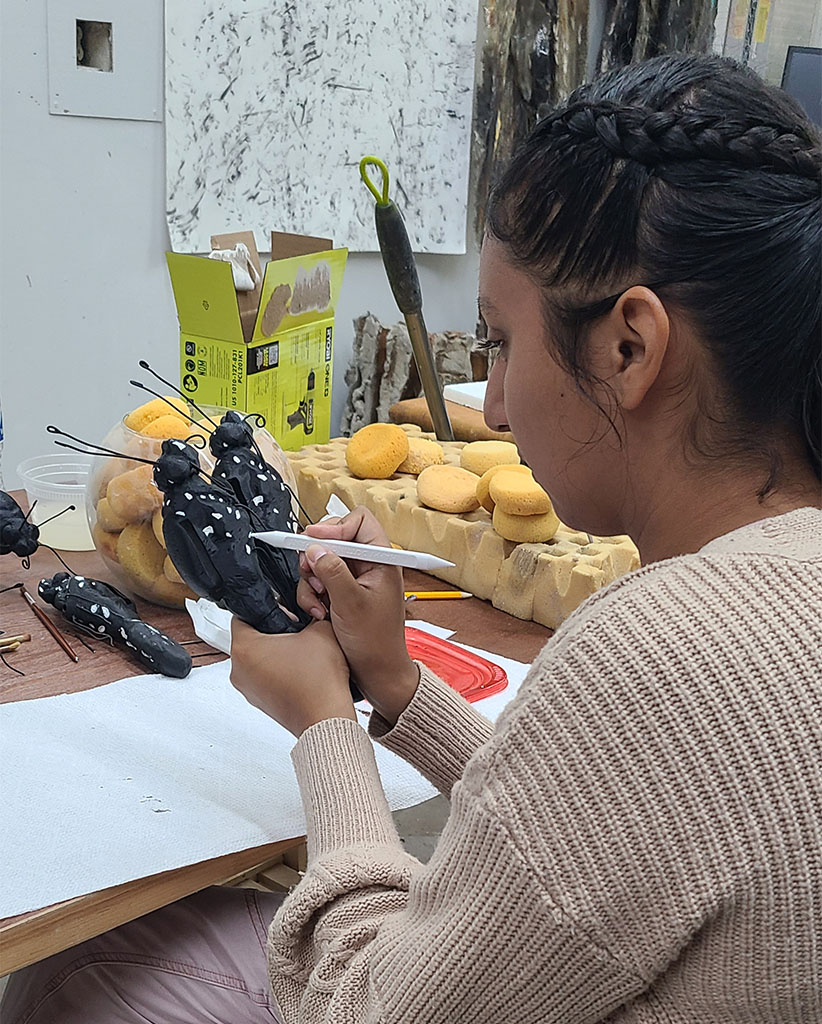
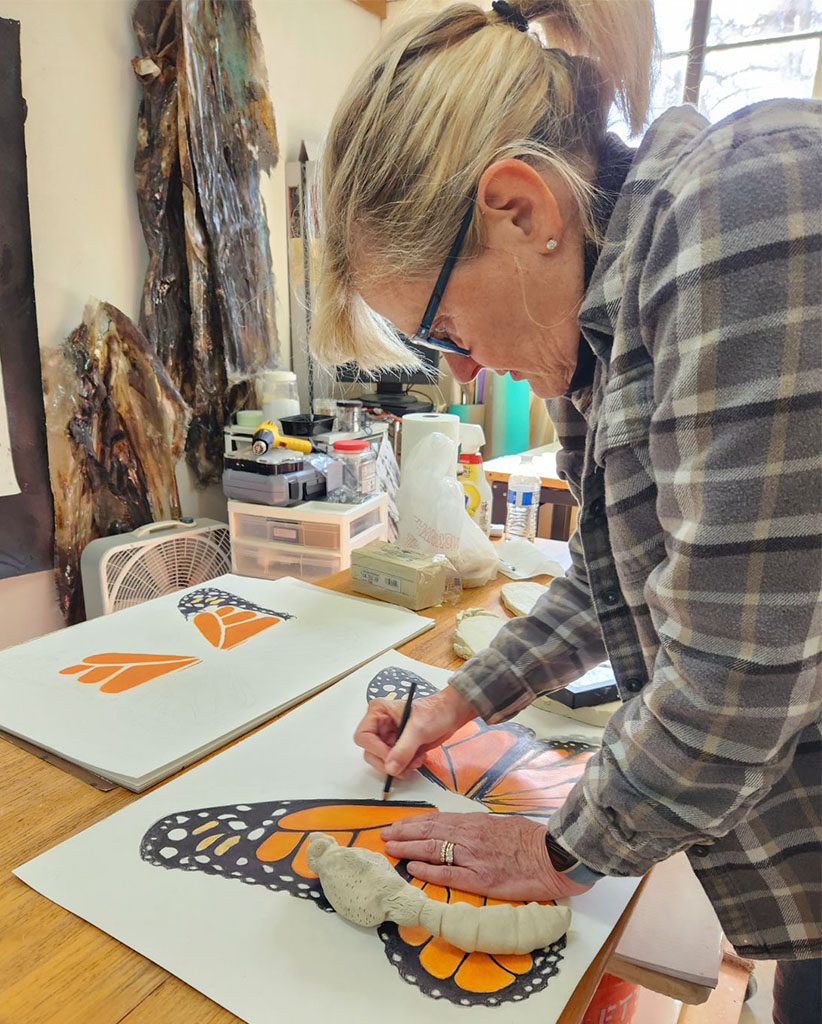
Everyone notices the brilliantly patterned wings, but not necessarily the body. A realistic body model was sculpted with the assistance of Jacob Nye, Sandra Perez, and Chris Anastas’s expert advice. The final body was scanned and 3D printed by ION Prototyping Lab. Items considered were the duplication of the hairs that look fur-like on the Monarch’s body, how to capture the spots, antenna, proboscis, and legs, how the wings are attached to the body, how the sculpture is anchored to the ground, and the effect of climate on the structures.
The polycarbonate wings had to be transformed into the Monarch Butterfly’s distinctive color and pattern. Subtle coloration was important to project realism. Matthews studied photos and specimens to assist with these decisions and to incorporate wing patterns that distinguish between the male and female.
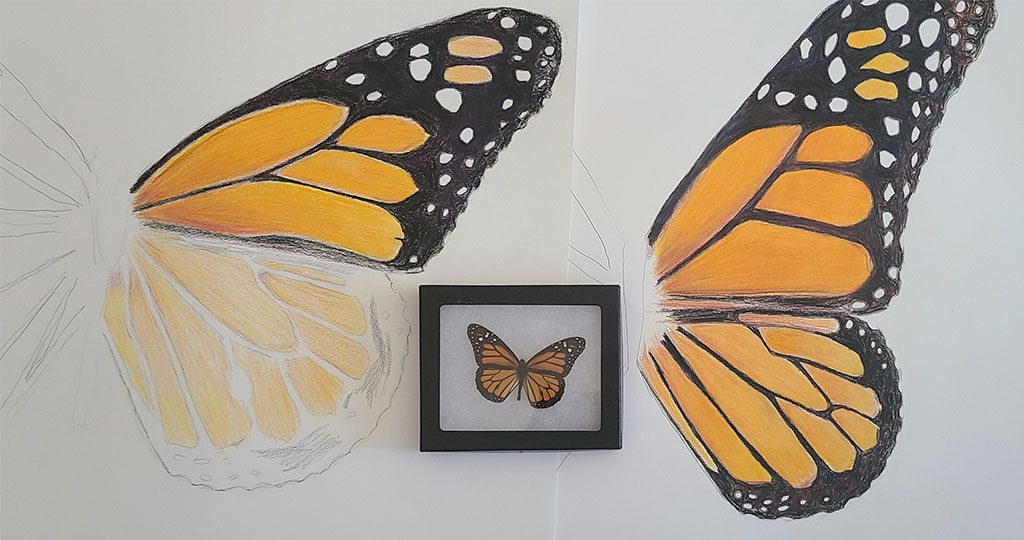
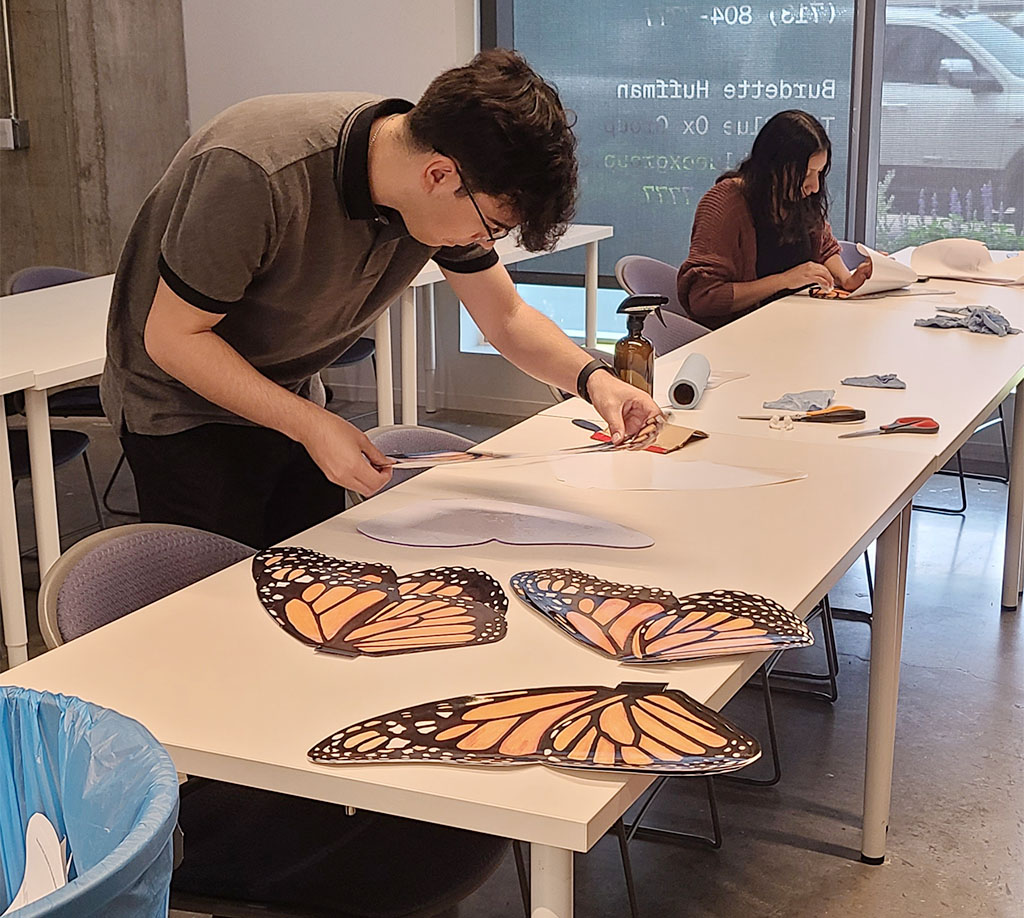
Using colored pencils, she drew the male and female wings individually, front and back. The final drawing was scanned and printed on UV-protected vinyl decals applied to the wing. Forty decals were used to create 10 butterflies.
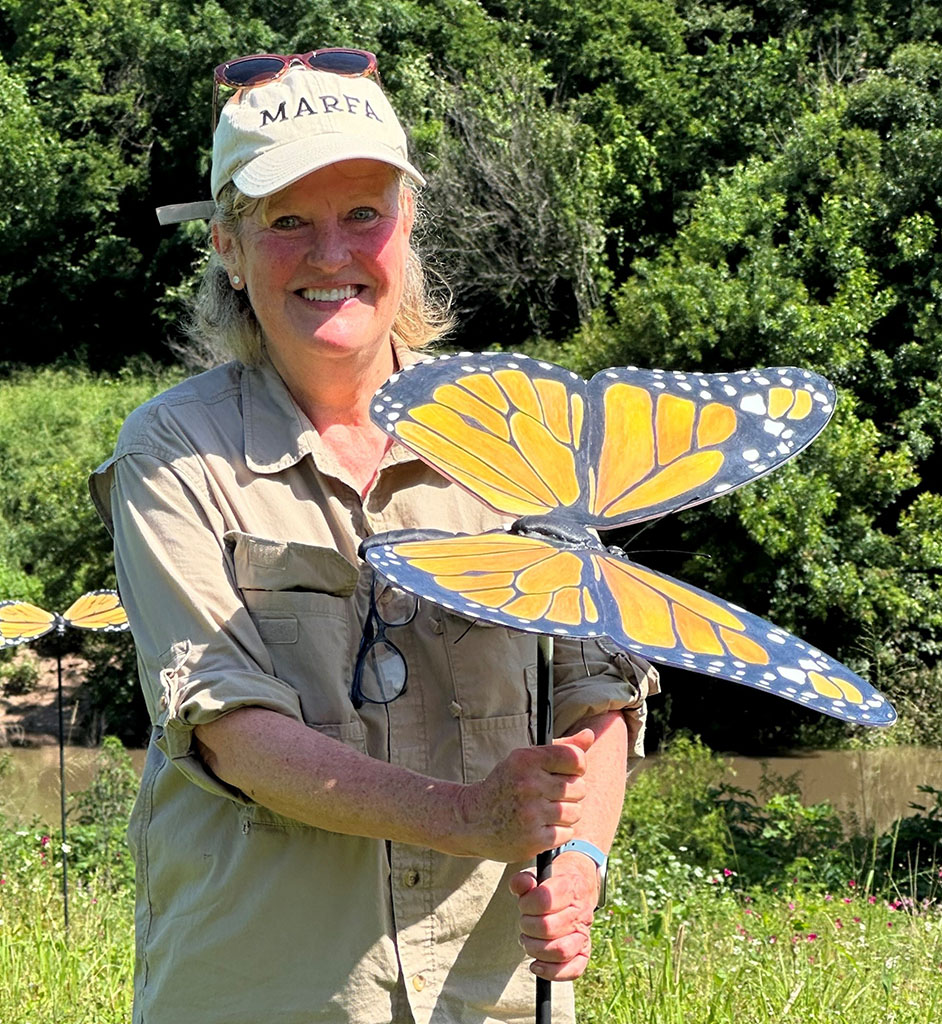
VOILA! — Giant Monarch Butterflies ready to soar over a coastal prairie restoration site on Buffalo Bayou.
Meanwhile, as the artistic decisions were being hammered out, the sculptural butterflies needed appropriate plants to soar over. Volunteers of the Galveston Bay Chapter of the Texas Master Naturalists (GBA-TMN) collected bare-root Liatris and Rattlesnake Master from the UHCC’s prairie and germinated native milkweed and grasses at UHCC’s greenhouse. Using UHCC plant material plus plants and annual seeds donated by GBA-TMN, the volunteers installed 500 plants in late February at the Buffalo Bayou site chosen by the Buffalo Bayou Partnership. The species mix provided food for the Monarch Butterfly’s larval stage via native milkweed and nectar sources for the adults.
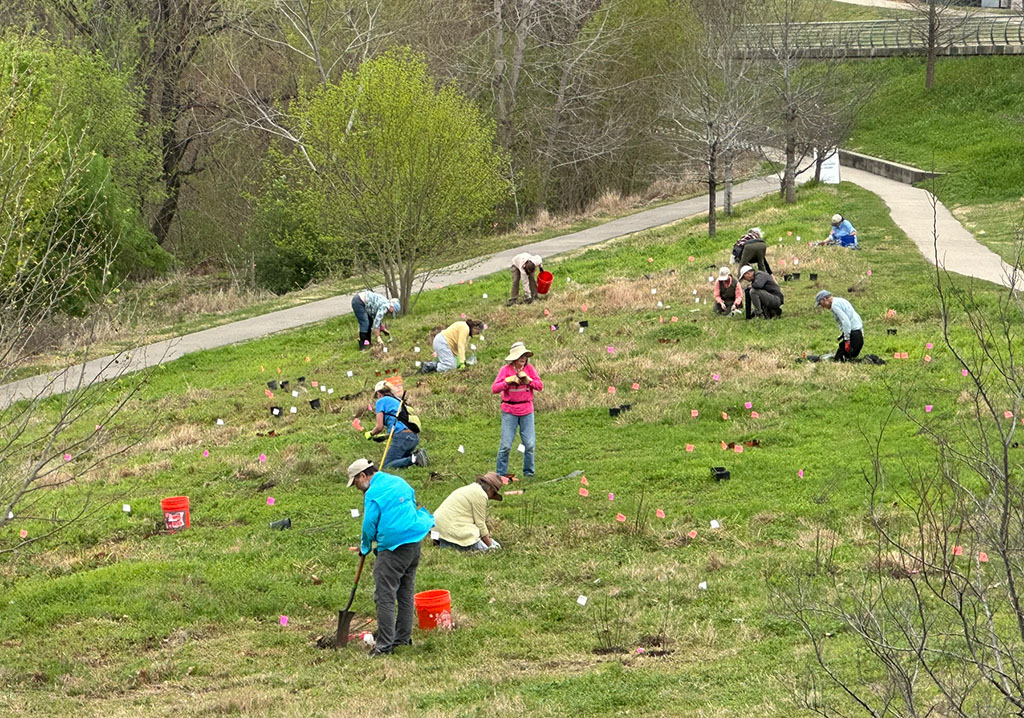
The native plants installed as part of the Houston Monarch Story on Buffalo Bayou are a step in the restoration of the site. The inaugural temporary art installation on Buffalo Bayou ended on December 1, 2024. It was the catalyst to expand the Houston Monarch Story project to other Houston venues.
The Houston Monarch Story will next land at the Houston Arboretum’s Butterfly House with lots of new plants! It will open on March 1, 2025, in time for monarch spring migration and end after the fall migration.
Artist Michelle Matthews would like to thank the multiple partners who provided support to the Houston Monarch Story:
Explore More